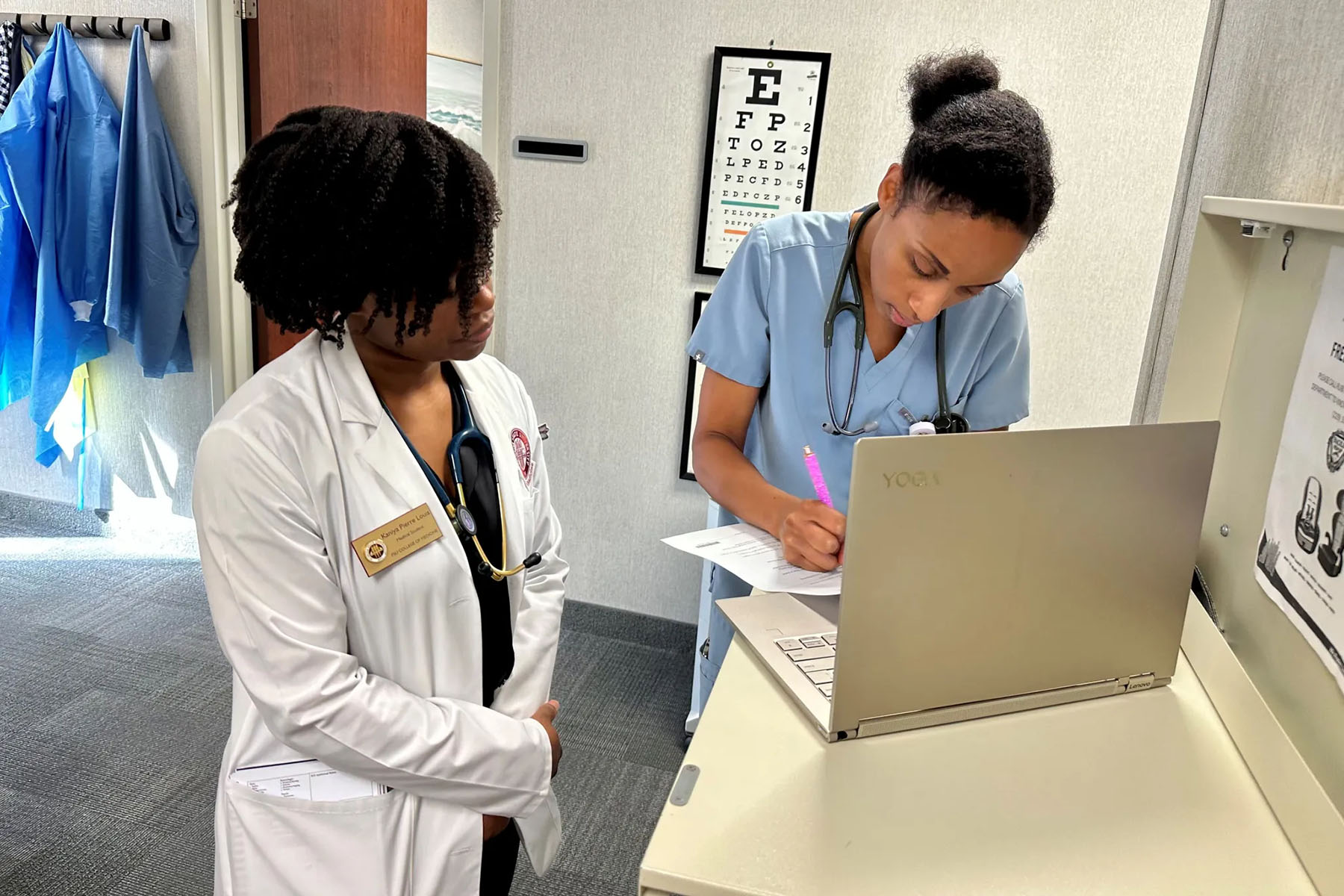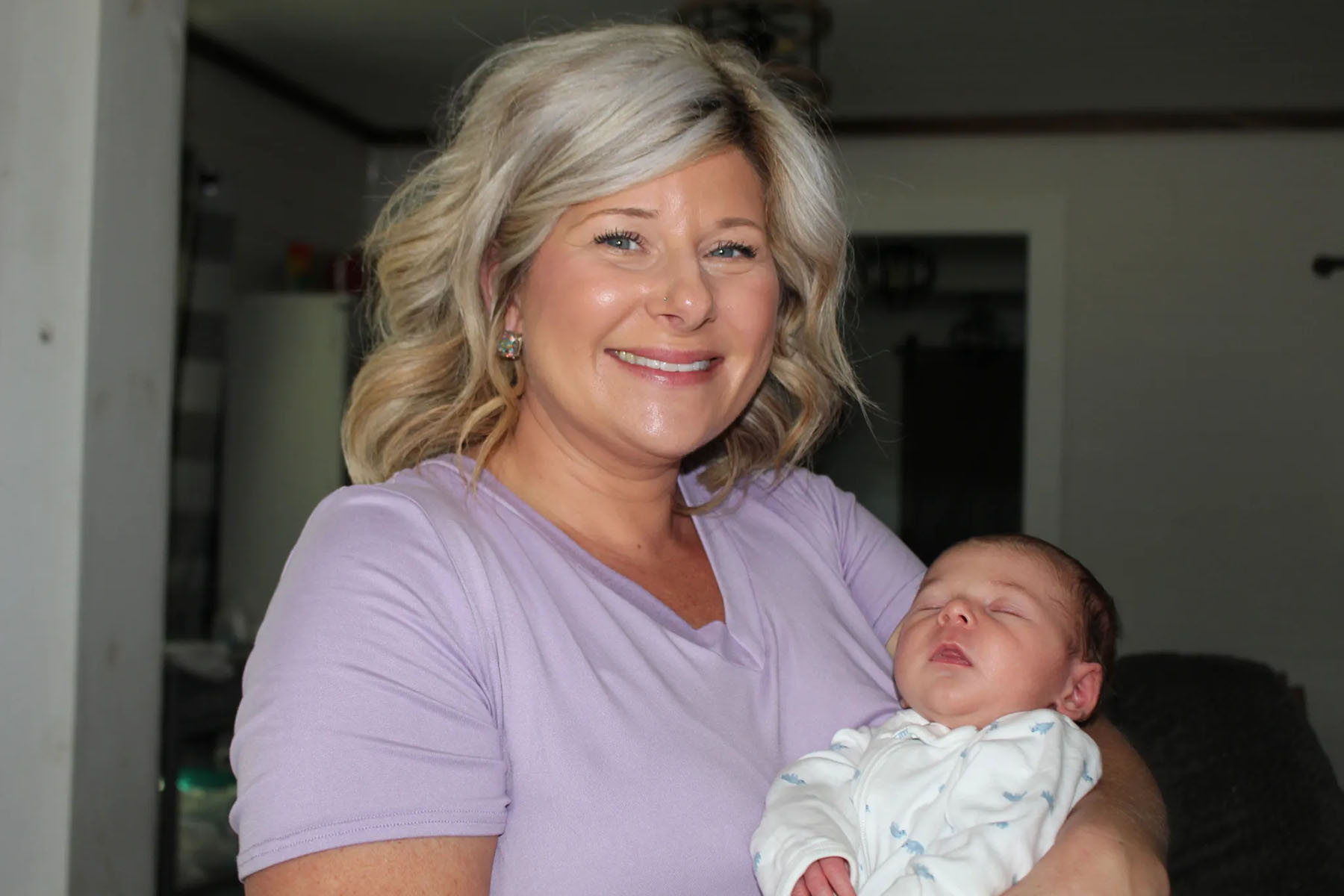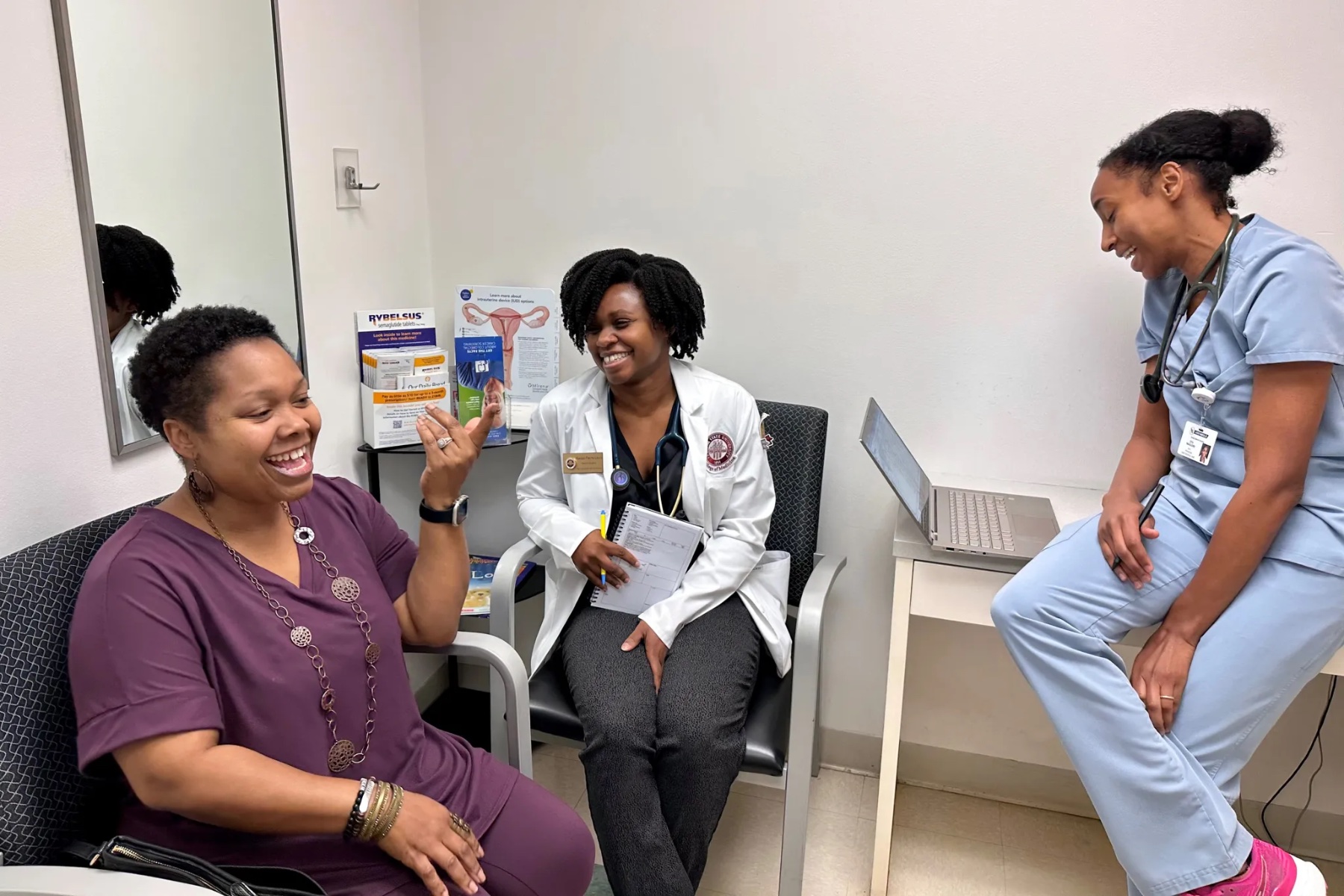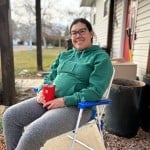CAIRO, Ga. — Zita Magloire carefully adjusted a soft measuring tape across Kenadie Evans’ pregnant belly.
Determining a baby’s size during a 28-week obstetrical visit is routine. But Magloire, a family physician trained in obstetrics, knows that finding the parent’s uterus and, thus, checking the baby, can be tricky for inexperienced doctors.
“Sometimes it’s, like, off to the side,” Magloire said, showing a visiting medical student how to press down firmly and complete the hands-on exam. She moved her finger slightly to calculate the fetus’s height: “There she is, right here.”
Evans smiled and later said Magloire made her “comfortable.”
The 21-year-old had recently relocated from Louisiana to southeastern Georgia, two states where both maternal and infant mortality are persistently high. She moved in with her mother and grandfather near Cairo, an agricultural community where the hospital has a busy labor and delivery unit. Magloire and other doctors at the local clinic where she works deliver hundreds of babies there each year.
Scenes like the one between Evans and Magloire regularly play out in this rural corner of Georgia despite grim realities birthing parents and babies face nationwide. Maternal deaths keep rising, with Black and Indigenous people most at risk; the number of babies who died before their 1st birthday climbed last year; and more than half of all rural counties in the United States have no hospital services for delivering babies, increasing travel time for parents-to-be and causing declines in prenatal care.
There are many reasons labor and delivery units close, including high operating costs, declining populations, low Medicaid reimbursement rates, and staffing shortages. Family medicine physicians still provide the majority of labor and delivery care in rural America, but few new doctors recruited to less populated areas offer obstetrics care, partly because they don’t want to be on call 24/7. Now, with rural America hemorrhaging health care providers, the federal government is investing dollars and attention to increase the ranks.
“Obviously the crisis is here,” said Hana Hinkle, executive director of the Rural Training Track Collaborative, which works with more than 70 rural residency training programs. Federal grants have boosted training programs in recent years, Hinkle said.

In July, the Department of Health and Human Services announced a nearly $11 million investment in new rural programs, including family medicine residencies that focus on obstetrical training.
Nationwide, a declining number of primary care doctors — internal and family medicine — has made it difficult for patients to book appointments and, in some cases, find a doctor at all. In rural America, training family medicine doctors in obstetrics can be more daunting because of low government reimbursement and increasing medical liability costs, said Hinkle, who is also assistant dean of Rural Health Professions at the University of Illinois College of Medicine in Rockford.
In the 1980s, about 43 percent of general family physicians who completed their residencies were trained in obstetrics. In 2021, the American Academy of Family Physicians’ annual practice profile survey found that 15 percent of respondents had practiced obstetrics.
Yet family doctors, who also provide the full spectrum of primary care services, are “the backbone of rural deliveries,” said Julie Wood, a doctor and senior vice president of research, science, and health of the public at the AAFP.
In a survey of 216 rural hospitals in 10 states, family practice doctors delivered babies in 67 percent of the hospitals, and at 27 percent of the hospitals they were the only ones who delivered babies. The data counted babies delivered from 2013 to 2017. And, the authors found, if those family physicians hadn’t been there, many patients would have driven an average of 86 miles round-trip for care.
Mark Deutchman, the report’s lead author, said he was “on call for 12 years” when he worked in a town of 2,000 residents in rural Washington. Clarifying that he was exaggerating, Deutchman explained that he was one of just two local doctors who performed cesarean sections. He said the best way to ensure family physicians can bolster obstetric units is to make sure they work as part of a team to prevent burnout, rather than as solo do-it-all doctors of old.
There needs to be a core group of physicians, nurses, and a supportive hospital administration to share the workload “so that somebody isn’t on call 365 days a year,” said Deutchman, who is also associate dean for rural health at the University of Colorado Anschutz Medical Campus School of Medicine. The school’s College of Nursing received a $2 million federal grant this fall to train midwives to work in rural areas of Colorado.
Nationwide, teams of providers are ensuring rural obstetric units stay busy. In Lakin, Kansas, Drew Miller works with five other family physicians and a physician assistant who has done an obstetrical fellowship. Together, they deliver about 340 babies a year, up from just over 100 annually when Miller first moved there in 2010. Word-of-mouth and two nearby obstetric unit closures have increased their deliveries. Miller said he has seen friends and partners “from surrounding communities stop delivering just from sheer burnout.”
In Galesburg, Illinois, Annevay Conlee has watched four nearby obstetric units close since 2012, forcing some pregnant people to drive up to an hour and a half for care. Conlee is a practicing family medicine doctor and medical director overseeing four rural areas with a team of OB-GYNs, family physicians, and a nurse-midwife. “There’s no longer the ability to be on 24/7 call for your women to deliver,” Conlee said. “There needs to be a little more harmony when recruiting in to really support a team of physicians and midwives.”
In Cairo, Magloire said practicing obstetrics is “just essential care.” In fact, pregnancy care represents just a slice of her patient visits in this Georgia town of about 10,000 people. On a recent morning, Magloire’s patients included two pregnant people as well as a teen concerned about hip pain and an ecstatic 47-year-old who celebrated losing weight.

Cairo Medical Care, an independent clinic situated across the street from the 60-bed Archbold Grady hospital, is in a community best known for its peanut crops and as the birthplace of baseball legend Jackie Robinson. The historical downtown has brick-accented streets and the oldest movie theater in Georgia, and a corner of the library is dedicated to local history.
The clinic’s six doctors, who are a mix of family medicine practitioners, like Magloire, and obstetrician-gynecologists, pull in patients from the surrounding counties and together deliver nearly 300 babies at the hospital each year.
Deanna Buckins, a 36-year-old mother of four boys, said she was relieved when she found “Dr. Z” because she “completely changed our lives.”
“She actually listens to me and accepts my decisions instead of pushing things upon me,” said Buckins, as she held her 3-week-old son, whom Magloire had delivered. Years earlier, Magloire helped diagnose one of Buckins’ older children with autism and built trust with the family.
“Say I go in with one kid; before we leave, we’ve talked about every single kid on how they’re doing and, you know, getting caught up with life,” Buckins said.
Magloire grew up in Tallahassee, Florida, and did her residency in rural Kansas. The smallness of Cairo, she said, allows her to see patients as they grow — chatting up the kids when the mothers or siblings come for appointments.
“She’s very friendly,” Evans said of Magloire. Evans, whose first child was delivered by an OB-GYN, said she was nervous about finding the right doctor. The kind of specialist her doctor was didn’t matter as much as being with “someone who cares,” she said.
As a primary care doctor, Magloire can care for Evans and her children for years to come.
This article was produced by KFF Health News, formerly known as Kaiser Health News (KHN), a national newsroom that produces in-depth journalism about health issues and is one of the core operating programs at KFF — the independent source for health policy research, polling, and journalism.





